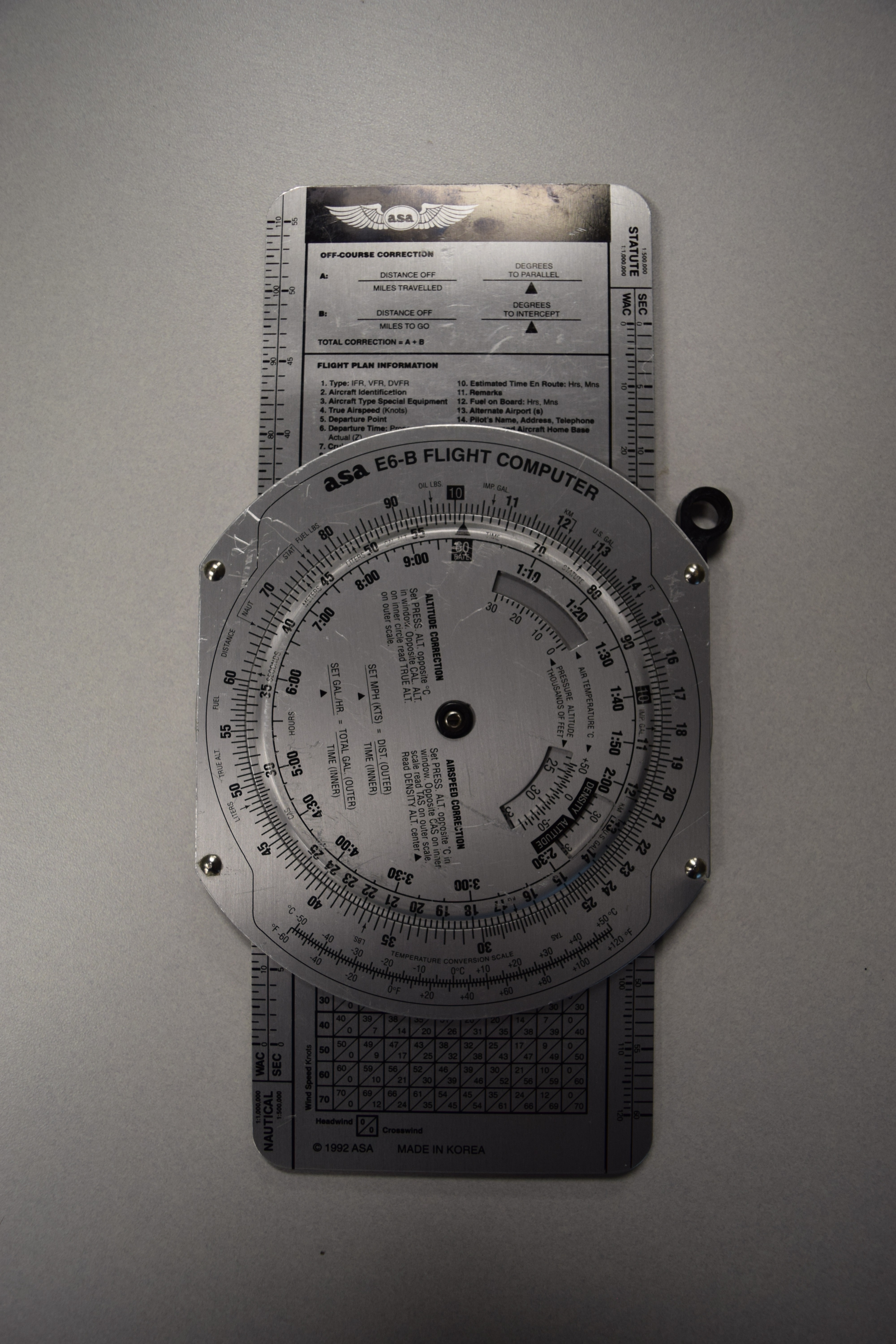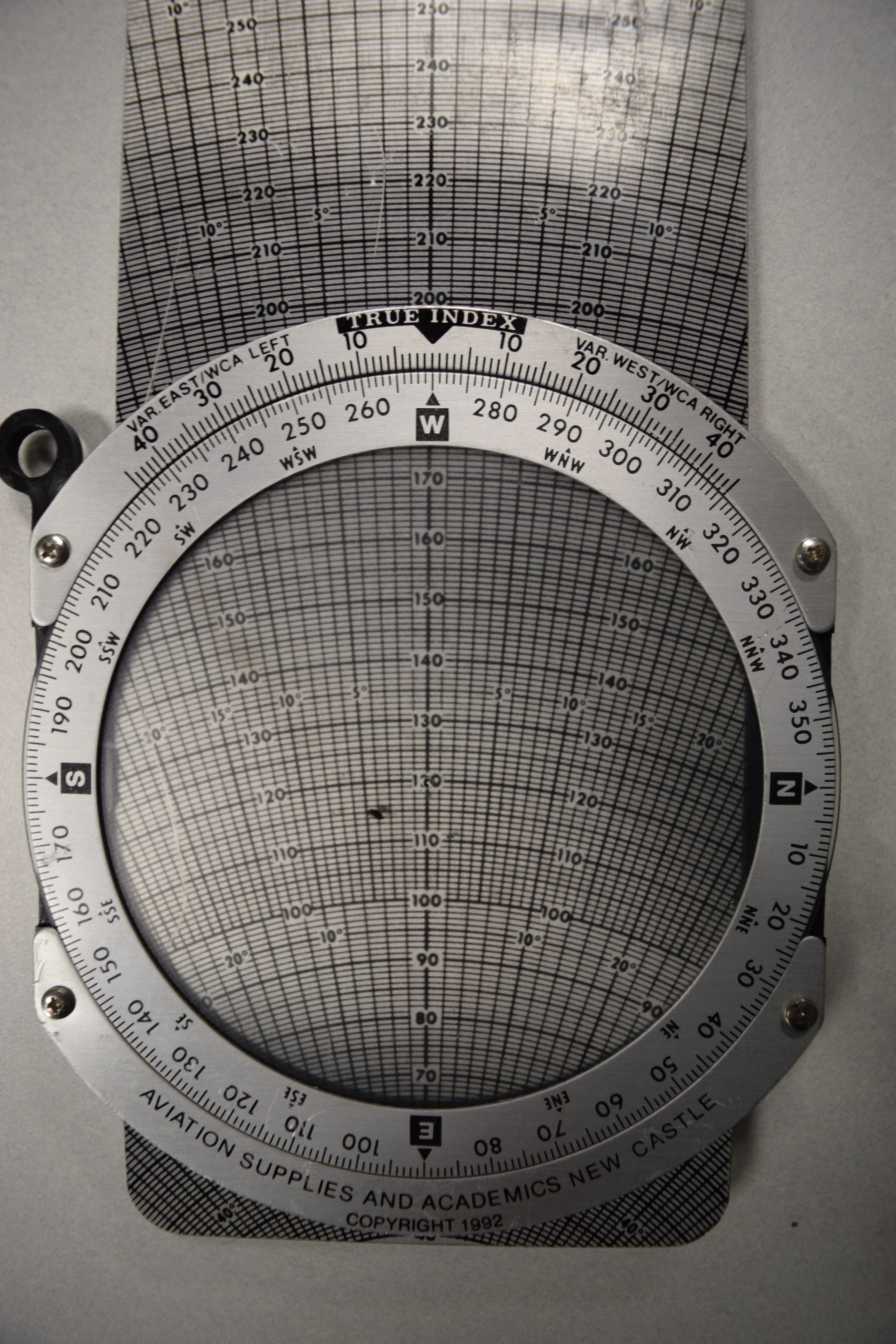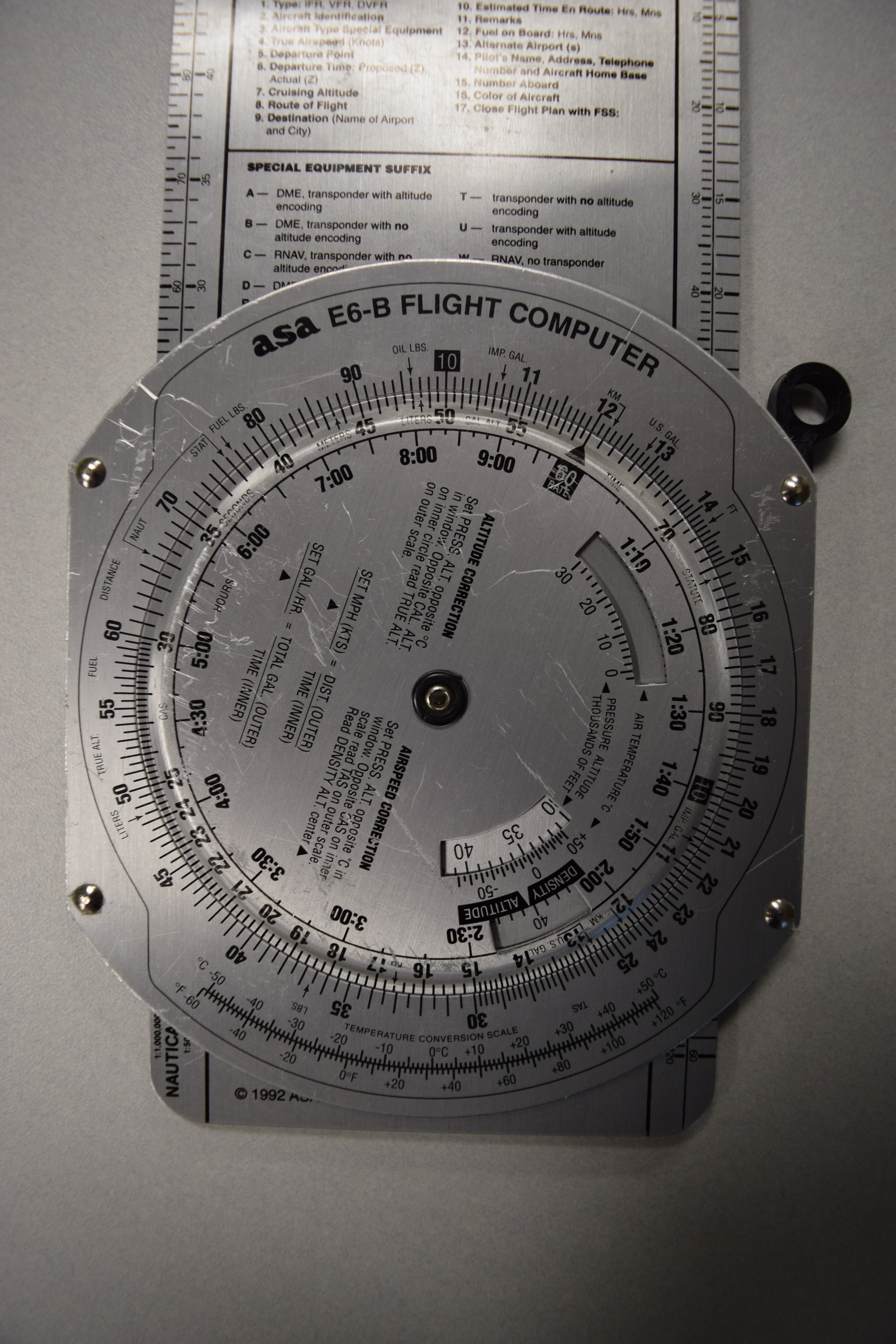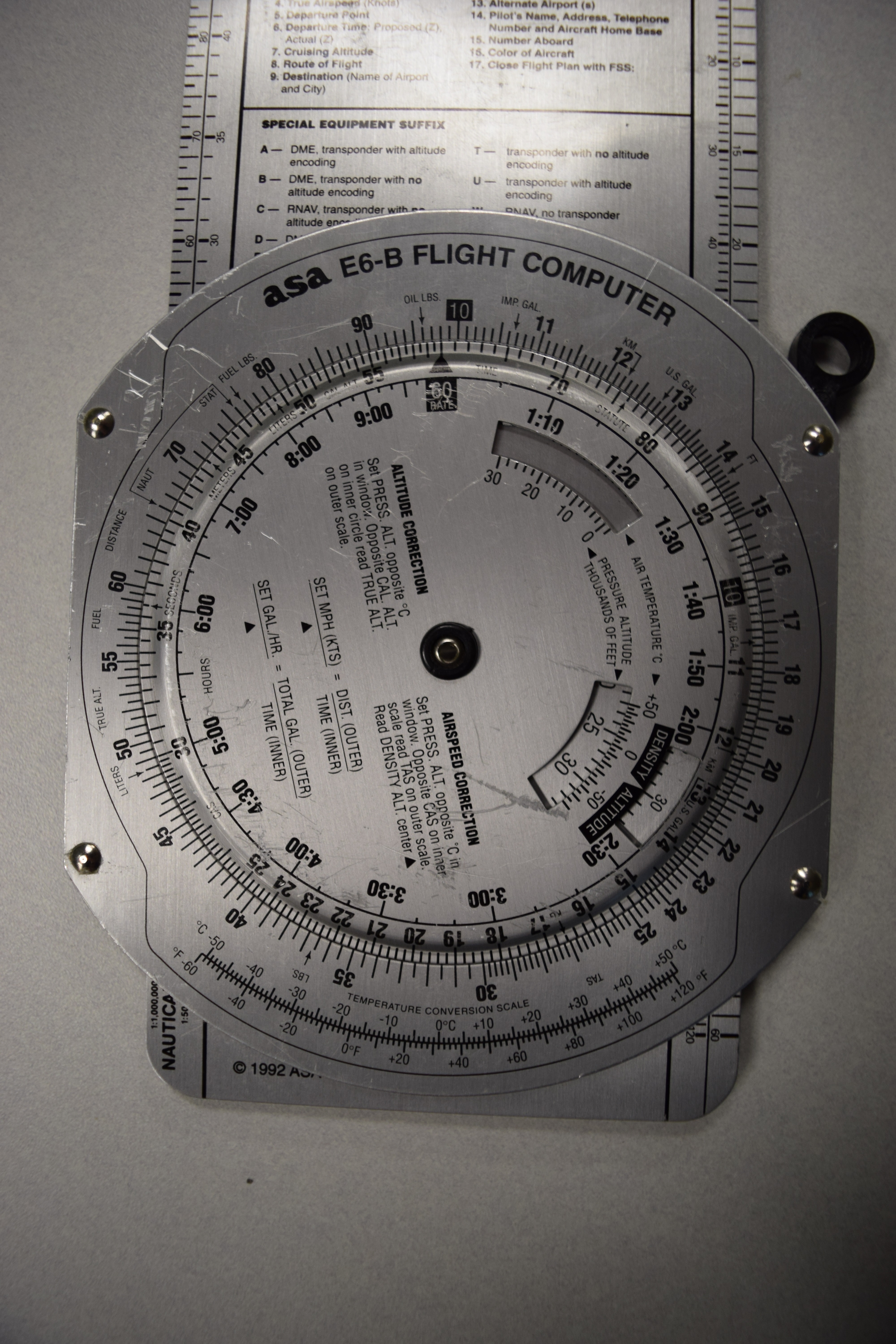How to Calculate Time and Fuel to a Location Using an E6B
by Andrew_D in Circuits > Tools
26593 Views, 6 Favorites, 0 Comments
How to Calculate Time and Fuel to a Location Using an E6B

One of the first things that a pilot learns to do is to use an E6B, which is an invaluable tool in quickly calculating your time and fuel to a location. This is important on the ground to make sure we will arrive on time and with enough fuel, but is even more critical in the air should a situation arise in which you need to change your destination. In this Instructable we will learn how to use both sides of the E6B to find these numbers quickly. Note that the numbers used in the sample problems such as airspeed that are given. This is due to the scope of this Intructable only focusing on the use of an E6B.
Things you'll need:
An E6B Flight Computer
A Pencil or Dry Erase Marker
A Piece of Paper to record your results
Time to Complete:
10 minutes
Input Wind Direction and Value

There are two sides of an E6B. The side you will need to start on is the side with a movable semi-clear disk. The first step is to rotate the movable disk to the direction the wind is coming from. In the example we will be using for this Instructable, the wind is coming from 150 at a velocity of 10 knots. Headings are based on a typical magnetic compass configuration with headings given in numbers. With the winds set to 150, you then need to move the center circle of the movable disk to 100 knots on the scale behind the plastic. This is simply for ease of use for adding wind velocity, as 100 is a good place to start at. After setting this, make a mark at the 110 knots mark using your pencil or marker. This is because there is 10 knots of wind coming from that direction. Move on to the next step.
Input Heading and Find Groundspeed

Now that you have a mark for the wind, rotate the movable disk to the heading to your location. In this example the heading to the destination is 270. With the heading set, move the disk up or down to align that dot over your airspeed, which in this case is 115 knots. Look at the center circle you used earlier. The speed under it is your ground speed of 120 knots, which we will need in the next step to find the time to destination.
Input Groundspeed and Find Time

Now that you have your ground speed, you can now find the time to your destination. Flip the E6B to the opposite side. The scale we will be using is on the outside of the movable ring, which can be confusing. For airspeed, values higher than 100 are divided by 10. In the example, because you have 120 knots of ground speed, rotate the ring to move "60 Rate" arrow to 12 (120/10=12). Now, use the same outside scale to find the distance of 70 miles, but do not rotate the ring. The number opposite 70 on the inside scale is the time it will take to reach your destination, which in this example is 35 minutes. Now that we have time, we can find the total fuel burn to the destination.
Input GPH and Find Fuel Burn

For the final step, you will need to use a given fuel burn of 9.8 gallons per hour. Rotate the '60 Rate' arrow over to 9.8, which on this scale is actually 98. On the inner time scale, move down to 35, and across from it read the number 57. At 9.8 gallons per hour, it is illogical to think we will burn 57 gallons. This is because the scales on an E6B can be used with small and big numbers, and it takes a little bit of thinking to make sure you are getting the right number. In this case, because we know we burn 9.8 gallons per hour, we should burn less than that travelling for 35 minutes. 5.7 gallons makes much more sense, and is the correct answer. With this you have completed the final step and found time and fuel to your destination.